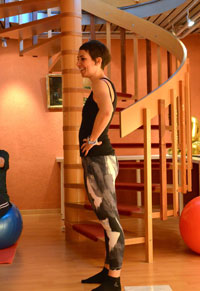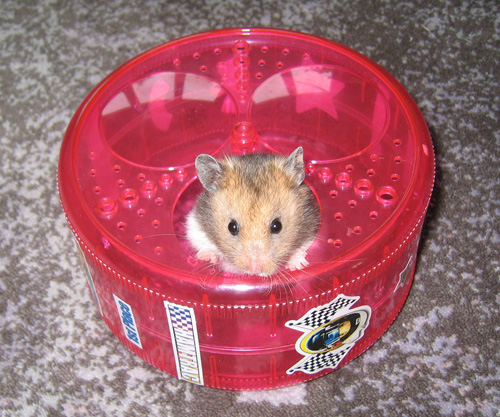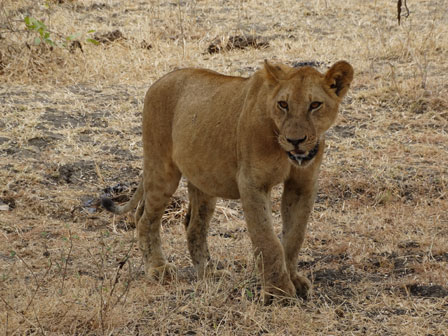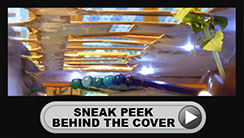 Johdi Woodford was born in Zimbabwe in 1979 and discovered Pilates in 1999 when a leg injury ended her marathon running career and an osteopath suggested she try Pilates. She began to practice Pilates regularly in every country she lived in and, having arrived in Switzerland in 2004, and having worked in the Marketing & Communication sectors, she decided to make her passion her career and trained to become a Pilates Instructor after the birth of her first child. She has been certified with the Pilates Institute in Geneva and London and teaching since 2010. Her training includes workshops on Pilates for pre and post pregnancy, Pilates for seniors, as well as special sessions led by physiotherapists on the rehabilitation of the back, shoulder and hip girdle.
Johdi Woodford was born in Zimbabwe in 1979 and discovered Pilates in 1999 when a leg injury ended her marathon running career and an osteopath suggested she try Pilates. She began to practice Pilates regularly in every country she lived in and, having arrived in Switzerland in 2004, and having worked in the Marketing & Communication sectors, she decided to make her passion her career and trained to become a Pilates Instructor after the birth of her first child. She has been certified with the Pilates Institute in Geneva and London and teaching since 2010. Her training includes workshops on Pilates for pre and post pregnancy, Pilates for seniors, as well as special sessions led by physiotherapists on the rehabilitation of the back, shoulder and hip girdle.
Johdi opened Little Bird Pilates in 2014 with the aim of sharing her passion for intelligent exercise to a wider audience. Her main aim is to help people, of any age and any sporting background, to find freedom of movement, and gain strength and suppleness without pain and discomfort, which then improves their daily lives. Johdi regularly attends workshops and seminars in order to continue to deepen and broaden her knowledge and technique.

by Johdi Woodford, Little Bird Pilates
“Sitting is more dangerous than smoking, kills more people than HIV, and is more treacherous than parachuting, we are sitting ourselves to death” says Dr James Levine, the Director of the Mayo Clinic at the Arizona State University Obesity Solutions Initiative.
Scary isn’t it? So what should we do about it? Simple, you say, make everybody move to a standing desk, or worse, a treadmill desk, ugh! Can you imagine, talk about being a human hamster, or literally being in the Rat Race? But apparently, researchers have found that sitting down for more than 6 hours per day will greatly increase your risk of an early death. So seriously, what are we going to do about it? Well, now that we’ve all been made increasingly aware of the impending doom by a recent spate of scare-mongering headlines, we’re all going to make sure that we get up regularly from our chair to move around more (read more trips to the water fountain, not more runs to the vending machine!) And that’s it, simple as that, the end to our problems? No, not really. Because, as we get up from our chair, 90% (and that’s a conservative estimate) of us will take our smart phone along and use the time to send a message or two, or check our news feeds, right? And then we’re at risk from the dreaded ‘Text Neck’. Yes, it’s a real thing, according to doctors. It’s caused the constant, downward-looking gaze that puts an enormous strain on your neck muscles. When you’re standing straight, your head weighs about 10-12 pounds. But, as the head comes forward further and further, so the weight of it increases exponentially: at 15 degrees forward, the head weighs 27 pounds, at 45 degrees forward, the head weighs 60 pounds. All this increases the load on muscles that are simply not built for it and can lead to a great deal of damage over time.

by Johdi Woodford, Little Bird Pilates
Picture this: it’s the evening on the African savannah, a large herd of antelope are grazing calmly. Nearby, a lioness is lying in wait in the long, yellow grass, alert to every movement, tail flicking intently. A young antelope wanders carelessly away for the rest of the herd, in search of greener pastures, and, like a bullet, the lioness leaps up, sprints the five hundred metres or so that separate her from the young buck. The agile lion springs on his back, sinks her canines deep into his jugular vein, and the rest you know from many a happy moment in front of David Attenbrough’s Wildlife on One, perhaps. You’ve seen it a million times, right? But what you never, never see, is the lioness on the sidelines quickly breaking into a few lunges, squats and quad stretches before she sets off for the kill. And what you most certainly never see is the unsuspecting prey giving it a hasty limbering up in case of a predator’s attack. So, if animals, and high-performing, athletic animals, (we’re not talking about the slow-moving koala, or the giant, three-toed sloth here), don’t stretch before they set off, should we, as another active and supposedly highly intelligent animal put so much stock in stretching?









